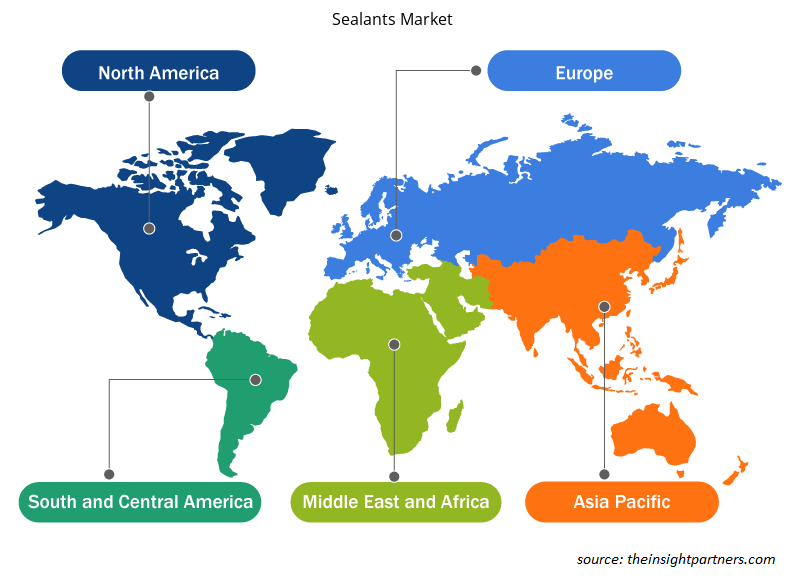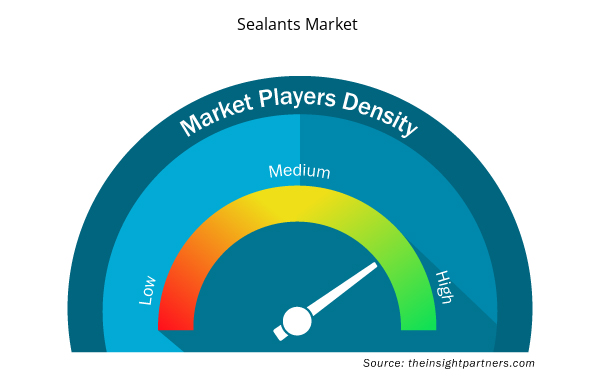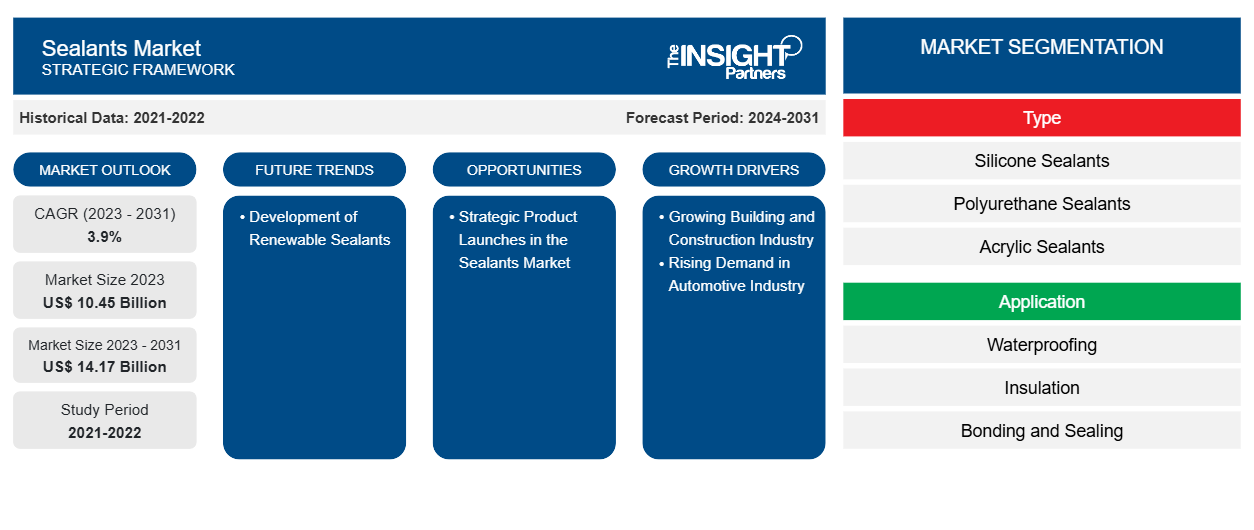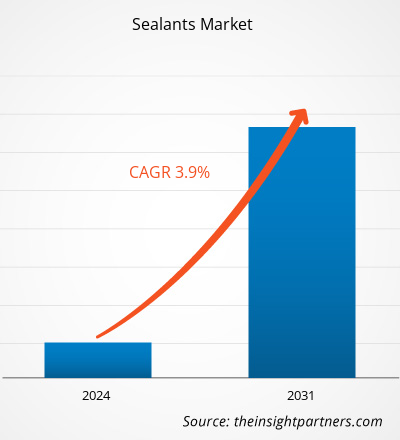密封剂市场规模预计将从 2023 年的 104.5 亿美元增长到 2031 年的 141.7 亿美元;预计 2023 年至 2031 年期间的复合年增长率为 3.9%。可再生密封剂的发展很可能仍是市场的一个主要趋势。
密封剂市场分析
由于城市化进程加快、政府支持的基础设施开发项目数量不断增加以及私人和政府对商业空间、办公室和高速公路开发的投资激增,全球建筑业正在大幅增长。在建筑业中,密封剂用于增加建筑结构的灵活性,使材料能够吸收由不确定的气候条件引起的压力和运动。它们还为建筑物提供能源效率,并提供防空气、防尘和隔音的屏障。结构密封剂用于各种应用,例如屋顶、玻璃粘合、防火屏障、裂缝修复和甲板涂层。此外,硅酮密封剂还用于接头的膨胀、施工、连接和移动,以确保结构材料的稳定性。因此,建筑业的增长促进了密封剂市场的增长
密封剂市场概览
全球密封剂市场正在经历大幅增长,这得益于建筑、汽车、能源和电力、航空航天、海洋等终端行业的需求不断增长。密封剂用于填补裂缝;阻隔空气、水和湿气;以及密封接缝。技术进步推动了高性能和高效密封剂配方的开发,这些配方具有独特的性能。此外,可持续发展趋势正在影响密封剂市场,制造商越来越关注环保和低挥发性有机化合物配方。全球监管机构正在实施严格的环境标准和法规,以鼓励生产和使用绿色替代品。
定制此报告以满足您的需求
您可以免费定制任何报告,包括本报告的部分内容、国家级分析、Excel 数据包,以及为初创企业和大学提供优惠和折扣
- 获取此报告的关键市场趋势。这个免费样品将包括数据分析,从市场趋势到估计和预测。
密封剂市场驱动因素和机遇
汽车行业需求增长有利于市场增长
由于技术进步以及人们对 SUV、跨界车和其他轻型卡车的偏好激增,汽车行业正在经历强劲增长。根据欧洲汽车制造商协会 (ACEA) 于 2023 年 1 月发布的报告,北美汽车产量与 2021 年相比增长了 10.3%,2022 年达到 1040 万辆。汽车行业的公司在汽车制造方面投入巨资,以增加产量和销量。根据国际能源署的年度《全球电动汽车展望》,2022 年全球售出了超过 1000 万辆电动汽车,预计 2023 年销量将增长 35%,达到 1400 万辆。
密封剂用于不同的汽车部件和感应系统,有助于密封水分、灰尘和污染物。在汽车外部应用中,密封剂用于结构粘合、灯组装和玻璃粘合。密封剂用于密封车身接头和接缝、固定车辆玻璃(如挡风玻璃)和四分之一玻璃。汽车行业的密封剂应用包括铝制车门、氢动力汽车、车辆传感器、车辆照明系统和动力系统。因此,汽车行业不断增长的需求推动了密封剂市场的增长。
市场参与者推出的产品数量不断增加,创造了巨大的机遇
密封剂市场的主要制造商在产品创新、业务扩展和研发等战略发展计划上投入了大量资金,以提升其市场地位并吸引广泛的客户群。2023 年 3 月,陶氏公司扩大了其产品组合,增加了硅酮密封胶产品,以提供光伏 (PV) 组件组装材料,支持全球向可再生能源迈进。DOWSIL PV 产品线包含六种硅酮密封胶和粘合剂解决方案,可为轨道粘合、接线盒粘合和灌封、框架密封和建筑一体化光伏 (BIPV) 安装材料提供耐用性和性能。
2022 年,博斯蒂克推出了专为建筑应用开发的全系列密封剂。博斯蒂克 Pro 密封剂系列采用高模量和低模量配方,性能卓越,采用消费后回收的墨盒提供,减少了塑料对环境的净影响。2022 年,赢创推出了可持续液体聚丁二烯和 POLYVEST eCO,用作生产粘合剂和密封剂的原材料,用于汽车、电子、建筑等终端行业。因此,在预测期内,不断增加的产品创新预计将为密封剂市场创造丰厚的机会。
密封剂市场报告细分分析
有助于得出密封剂市场分析的关键部分是类型、应用和最终用途行业。
- 根据类型,密封剂市场分为硅酮密封剂、聚氨酯密封剂、丙烯酸密封剂、聚硫密封剂、丁基密封剂、混合密封剂等。混合密封剂细分市场进一步细分为硅烷改性聚合物密封剂、聚氨酯改性丙烯酸密封剂等。硅酮密封剂细分市场在 2023 年占据了最大的市场份额。
- 根据应用,市场分为防水、绝缘、粘合和密封、隔音等。防水领域在 2023 年占据了最大的市场份额。
- 就最终用途行业而言,市场细分为建筑和施工、汽车、电子、医疗保健、航空航天和国防、海洋、能源和电力等。建筑和施工部门在 2023 年占据了相当大的市场份额。
密封剂市场份额按地区分析
从地理上看,密封剂市场分为北美、欧洲、亚太地区、中东和非洲以及南美和中美洲。亚太地区在 2023 年占据最大市场份额,预计在预测期内将实现最高复合年增长率。欧洲在 2023 年占据第二大密封剂市场份额。就收入而言,中国在 2023 年占据亚太地区最大的市场份额。中国政府已采取多项举措,到 2025 年将汽车制造商的年生产能力刺激到 3500 万辆。根据国际能源署 2022 年的报告,中国在 2021 年的电动汽车销量为 330 万辆。此外,该国是世界上最大的建筑市场,并受到政府举措的大力支持。 2019 年,中国政府在 13 个公共住房项目中投资了 19 亿美元。根据“十四五”规划,中国计划在 2021-2025 年期间将城镇化率提高到 65%。因此,政府对城镇化的支持有可能推动建筑和基础设施行业的发展,从而推动对密封剂的需求。中国是世界上最大的电子产品生产国之一。该国也是中间电子零件的主要供应国。该国电子行业的扩张促进了密封剂市场的增长。
密封剂市场区域洞察
Insight Partners 的分析师已详细解释了预测期内影响密封剂市场的区域趋势和因素。本节还讨论了北美、欧洲、亚太地区、中东和非洲以及南美和中美洲的密封剂市场细分和地理位置。

- 获取密封剂市场的区域特定数据
密封剂市场报告范围
| 报告属性 | 细节 |
|---|---|
| 2023 年的市场规模 | 104.5亿美元 |
| 2031 年市场规模 | 141.7亿美元 |
| 全球复合年增长率(2023 - 2031) | 3.9% |
| 史料 | 2021-2022 |
| 预测期 | 2024-2031 |
| 涵盖的领域 | 按类型
|
| 覆盖地区和国家 | 北美
|
| 市场领导者和主要公司简介 |
|
密封剂市场参与者密度:了解其对业务动态的影响
密封剂市场正在快速增长,这得益于最终用户需求的不断增长,这些需求源于消费者偏好的不断变化、技术进步以及对产品优势的认识不断提高等因素。随着需求的增加,企业正在扩大其产品范围,进行创新以满足消费者的需求,并利用新兴趋势,从而进一步推动市场增长。
市场参与者密度是指在特定市场或行业内运营的企业或公司的分布情况。它表明在给定市场空间中,相对于其规模或总市场价值,有多少竞争对手(市场参与者)存在。
在密封剂市场运营的主要公司有:
- 3M 公司
- 西卡公司
- 陶氏化学公司
- 巴斯夫
- RPM国际公司
- 迈图高新材料公司
免责声明:上面列出的公司没有按照任何特定顺序排列。

- 了解密封剂市场主要参与者概况
密封剂市场新闻及最新发展
通过收集一手和二手研究后的定性和定量数据来评估密封剂市场,其中包括重要的公司出版物、协会数据和数据库。下面列出了市场的一些发展情况:
- 汉高签署协议,从 Arsenal Capital Partners (USA) 收购总部位于美国的 Seal for Life Industries LLC(“Seal for Life”)。(来源:汉高,新闻稿,2024 年 2 月)
- 陶氏宣布扩大其硅酮密封胶产品线,提供光伏 (PV) 组件组装材料,进一步推动全球向可再生能源的转变。(来源:陶氏,新闻稿,2023 年 3 月)
- 巴斯夫宣布,将把位于德国路德维希港的工厂中分子量聚异丁烯(商品名为 OPPANOL B)的产能提高 25%。中分子量聚异丁烯的应用包括表面保护膜、窗户密封剂、电池粘合剂材料和食品包装解决方案等。(来源:巴斯夫,新闻稿,2023 年 8 月)
密封剂市场报告范围和交付成果
“密封剂市场规模和预测(2021-2031 年)”报告对以下领域进行了详细的市场分析:
- 密封剂市场规模及范围内所有主要细分市场的预测
- 密封剂市场趋势以及市场动态,如驱动因素、限制因素和关键机遇
- 详细的波特五力分析和 SWOT 分析
- 密封剂市场分析涵盖主要市场趋势、国家框架、主要参与者、法规和最近的市场发展。
- 行业格局和竞争分析,涵盖市场集中度、热图分析、知名企业以及密封剂市场的最新发展
- 详细的公司简介
- 历史分析(2 年)、基准年、预测(7 年)及复合年增长率
- PEST 和 SWOT 分析
- 市场规模价值/数量 - 全球、区域、国家
- 行业和竞争格局
- Excel 数据集

Report Coverage
Revenue forecast, Company Analysis, Industry landscape, Growth factors, and Trends

Segment Covered
This text is related
to segments covered.

Regional Scope
North America, Europe, Asia Pacific, Middle East & Africa, South & Central America

Country Scope
This text is related
to country scope.
常见问题
The growing building & construction industry and rising demand from the automotive industry fuel the market growth.
The silicone sealants segment held the largest share in the global sealants market in 2023. Silicone sealants have excellent thermal resistance, dynamic movement capability, and adhesion. Silicone sealants are used to bind surfaces such as plastic, metal, and glass together.
Development of renewable sealants is expected to emerge as a future trend in the market.
Henkel AG and Co KGaA, HB Fuller Company, Sika AG, 3M Co, Huntsman International LLC, Dow Inc, BASF SE, RPM International Inc, and Momentive Performance Materials Inc are among the leading market players.
The market is expected to register a CAGR of 3.9% during 2023–2031.
In 2023, Asia Pacific held the largest share of the global sealants market. China is one of the high-skilled manufacturing hubs. In contrast, India, South Korea, and Taiwan are considered attractive business destinations for companies looking for medium-skilled manufacturing infrastructure and low labor costs. The growth in construction, electric vehicles, and the electronics industry in the region is driving the demand for sealants.
Trends and growth analysis reports related to Chemicals and Materials : READ MORE..
The List of Companies - Sealants Market
- 3M Co
- Sika AG
- Dow Inc
- BASF SE
- RPM International Inc
- Momentive Performance Materials Inc
- Arkema SA
- HB Fuller Co
- Henkel AG & Co KGaA
- ACTEGA DS GmbH
The Insight Partners performs research in 4 major stages: Data Collection & Secondary Research, Primary Research, Data Analysis and Data Triangulation & Final Review.
- Data Collection and Secondary Research:
As a market research and consulting firm operating from a decade, we have published and advised several client across the globe. First step for any study will start with an assessment of currently available data and insights from existing reports. Further, historical and current market information is collected from Investor Presentations, Annual Reports, SEC Filings, etc., and other information related to company’s performance and market positioning are gathered from Paid Databases (Factiva, Hoovers, and Reuters) and various other publications available in public domain.
Several associations trade associates, technical forums, institutes, societies and organization are accessed to gain technical as well as market related insights through their publications such as research papers, blogs and press releases related to the studies are referred to get cues about the market. Further, white papers, journals, magazines, and other news articles published in last 3 years are scrutinized and analyzed to understand the current market trends.
- Primary Research:
The primarily interview analysis comprise of data obtained from industry participants interview and answers to survey questions gathered by in-house primary team.
For primary research, interviews are conducted with industry experts/CEOs/Marketing Managers/VPs/Subject Matter Experts from both demand and supply side to get a 360-degree view of the market. The primary team conducts several interviews based on the complexity of the markets to understand the various market trends and dynamics which makes research more credible and precise.
A typical research interview fulfils the following functions:
- Provides first-hand information on the market size, market trends, growth trends, competitive landscape, and outlook
- Validates and strengthens in-house secondary research findings
- Develops the analysis team’s expertise and market understanding
Primary research involves email interactions and telephone interviews for each market, category, segment, and sub-segment across geographies. The participants who typically take part in such a process include, but are not limited to:
- Industry participants: VPs, business development managers, market intelligence managers and national sales managers
- Outside experts: Valuation experts, research analysts and key opinion leaders specializing in the electronics and semiconductor industry.
Below is the breakup of our primary respondents by company, designation, and region:

Once we receive the confirmation from primary research sources or primary respondents, we finalize the base year market estimation and forecast the data as per the macroeconomic and microeconomic factors assessed during data collection.
- Data Analysis:
Once data is validated through both secondary as well as primary respondents, we finalize the market estimations by hypothesis formulation and factor analysis at regional and country level.
- Macro-Economic Factor Analysis:
We analyse macroeconomic indicators such the gross domestic product (GDP), increase in the demand for goods and services across industries, technological advancement, regional economic growth, governmental policies, the influence of COVID-19, PEST analysis, and other aspects. This analysis aids in setting benchmarks for various nations/regions and approximating market splits. Additionally, the general trend of the aforementioned components aid in determining the market's development possibilities.
- Country Level Data:
Various factors that are especially aligned to the country are taken into account to determine the market size for a certain area and country, including the presence of vendors, such as headquarters and offices, the country's GDP, demand patterns, and industry growth. To comprehend the market dynamics for the nation, a number of growth variables, inhibitors, application areas, and current market trends are researched. The aforementioned elements aid in determining the country's overall market's growth potential.
- Company Profile:
The “Table of Contents” is formulated by listing and analyzing more than 25 - 30 companies operating in the market ecosystem across geographies. However, we profile only 10 companies as a standard practice in our syndicate reports. These 10 companies comprise leading, emerging, and regional players. Nonetheless, our analysis is not restricted to the 10 listed companies, we also analyze other companies present in the market to develop a holistic view and understand the prevailing trends. The “Company Profiles” section in the report covers key facts, business description, products & services, financial information, SWOT analysis, and key developments. The financial information presented is extracted from the annual reports and official documents of the publicly listed companies. Upon collecting the information for the sections of respective companies, we verify them via various primary sources and then compile the data in respective company profiles. The company level information helps us in deriving the base number as well as in forecasting the market size.
- Developing Base Number:
Aggregation of sales statistics (2020-2022) and macro-economic factor, and other secondary and primary research insights are utilized to arrive at base number and related market shares for 2022. The data gaps are identified in this step and relevant market data is analyzed, collected from paid primary interviews or databases. On finalizing the base year market size, forecasts are developed on the basis of macro-economic, industry and market growth factors and company level analysis.
- Data Triangulation and Final Review:
The market findings and base year market size calculations are validated from supply as well as demand side. Demand side validations are based on macro-economic factor analysis and benchmarks for respective regions and countries. In case of supply side validations, revenues of major companies are estimated (in case not available) based on industry benchmark, approximate number of employees, product portfolio, and primary interviews revenues are gathered. Further revenue from target product/service segment is assessed to avoid overshooting of market statistics. In case of heavy deviations between supply and demand side values, all thes steps are repeated to achieve synchronization.
We follow an iterative model, wherein we share our research findings with Subject Matter Experts (SME’s) and Key Opinion Leaders (KOLs) until consensus view of the market is not formulated – this model negates any drastic deviation in the opinions of experts. Only validated and universally acceptable research findings are quoted in our reports.
We have important check points that we use to validate our research findings – which we call – data triangulation, where we validate the information, we generate from secondary sources with primary interviews and then we re-validate with our internal data bases and Subject matter experts. This comprehensive model enables us to deliver high quality, reliable data in shortest possible time.




 Get Free Sample For
Get Free Sample For